Mazda’s MX-30 R-EV - a refreshing attempt at doing things differently
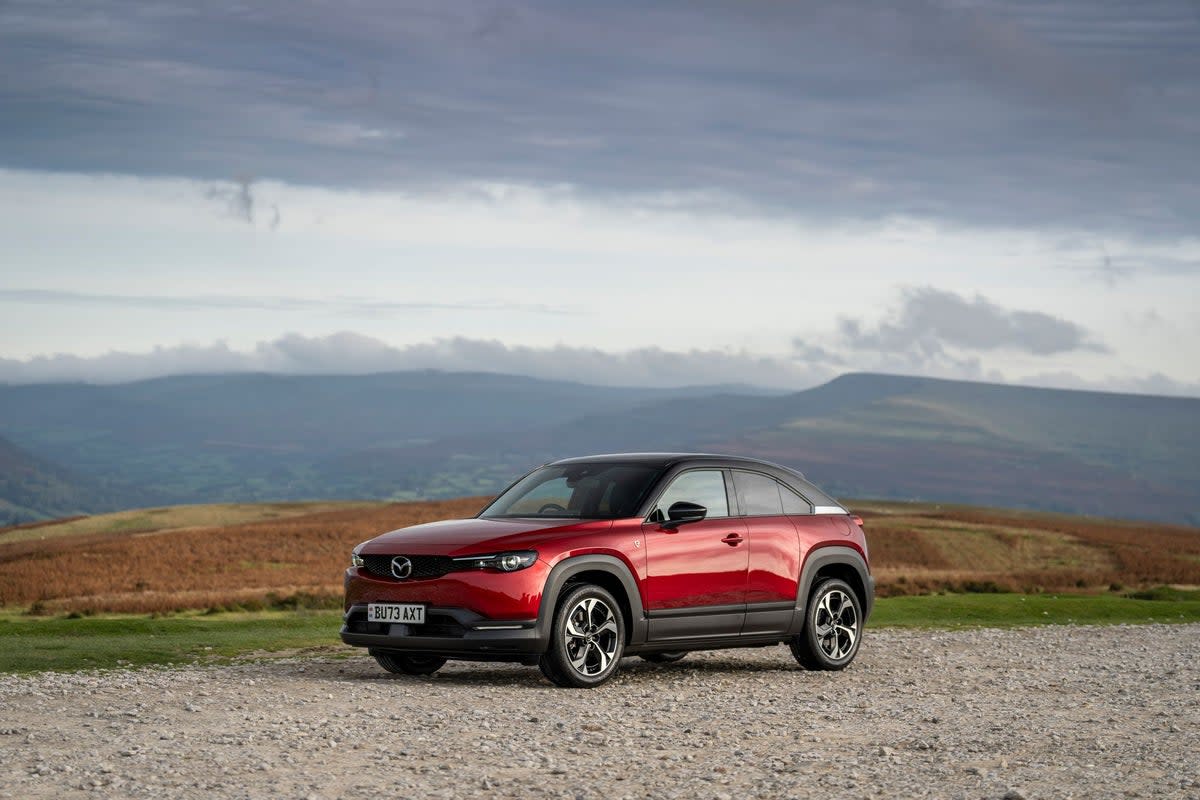
Mazda has spent decades making slightly left-field cars, and the MX-30 R-EV, its first petrol/electric plug-in hybrid model, is no exception.
The car takes the all-electric MX-30, which has been sold in Britain for the past three years, and adds a petrol motor-powered generating system. On paper this isn’t especially startling, but instead of a conventional piston engine, the MX-30 R-EV employs an 830cc rotary engine, which is compact, has fewer moving parts, and is noted for its smoothness and ability to spin at high speeds.
Spin cycle
Older rotaries had issues with emissions, economy, and durability, but Mazda has championed the technology since the 1960s, latterly with sportscars. The MX-30 is the world’s first, and so far, only rotary-engined petrol/electric hybrid.
Mix and match
Motive power at the wheels comes from an electric motor, animated by a 17.8kWh battery that is charged up by the rotary engine. When there’s enough juice, the petrol motor rests and the MX-30 is very quiet. When activated, the rotary engine drones softly in the background. Sometimes this is a little irritating, sometimes not. When it’s working hard, there’s some vibration, which intrudes on an otherwise serene driving experience.
High life
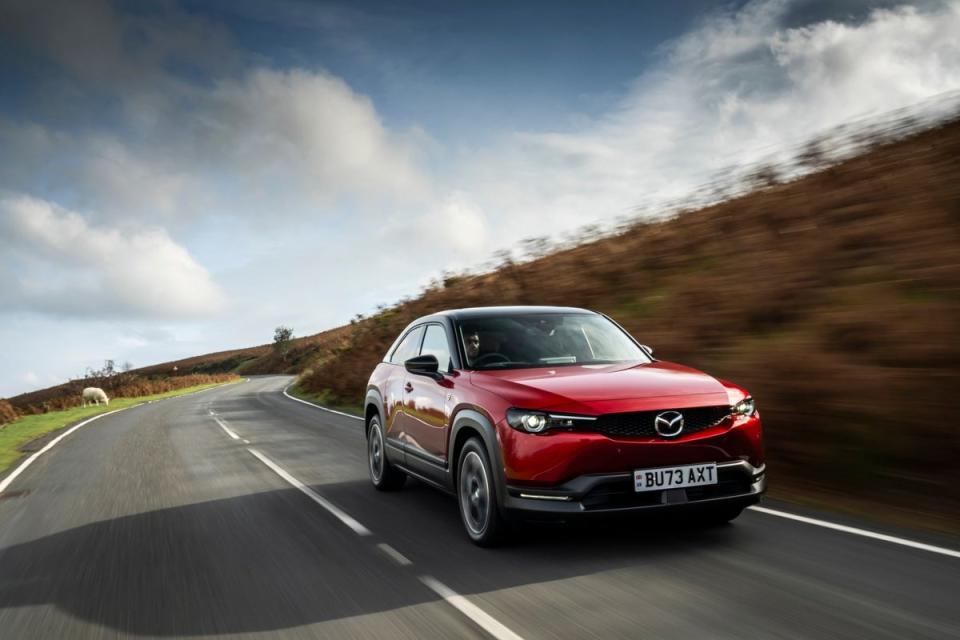
The car is a tall, compact sports utility which has virtually the same footprint as Mazda’s CX-30 sports utility. It looks like a conventional five-door, but there are no pillars between the front and rear side doors. The rears are small and hinged at their trailing edges, a bit like a London taxi. This looks fun, but adults will find getting into the back involves some writhing, and once there the thick pillars and small windows make for a slightly claustrophobic space, suitable for four rather than five grown-ups, who will still feel distinctly cramped. This windows/pillar combo also creates blind spots when parking and emerging from junctions.
The interior is well made, good looking, nicely designed and uses re-cycled plastic and even cork taken from wine bottle stopper offcuts - an imaginative touch - but one wonders how the cork lining the centre console oddments tray would stand up to a melting boiled sweet or a leaky ballpoint.
Logical design
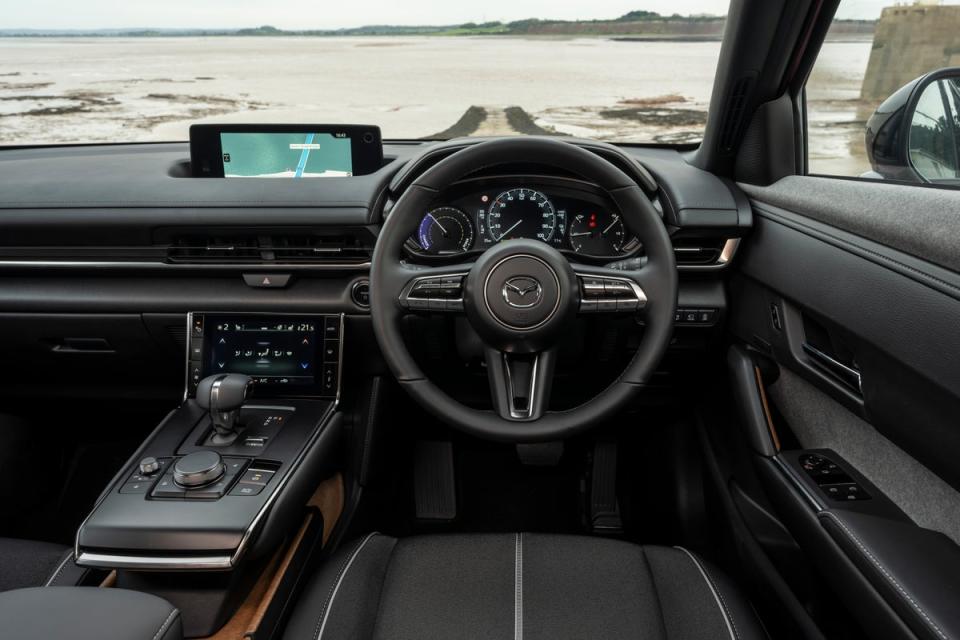
The controls and instruments work well, don’t attack the driver with a blizzard of information, and combine mix a touch-screen with real buttons and knobs. Connectivity is up to speed too.
This user-friendliness extends to the way the car behaves. It has three power modes, controlled by steering wheel paddles. These relate to how quickly the Mazda slows when you lift off the accelerator pedal and its battery is charged. On some electric cars this can be quite fierce, but the MX-30 is a gentler proposition, even in its highest energy reclaiming mode. So, the MX-30 is very relaxing to drive.
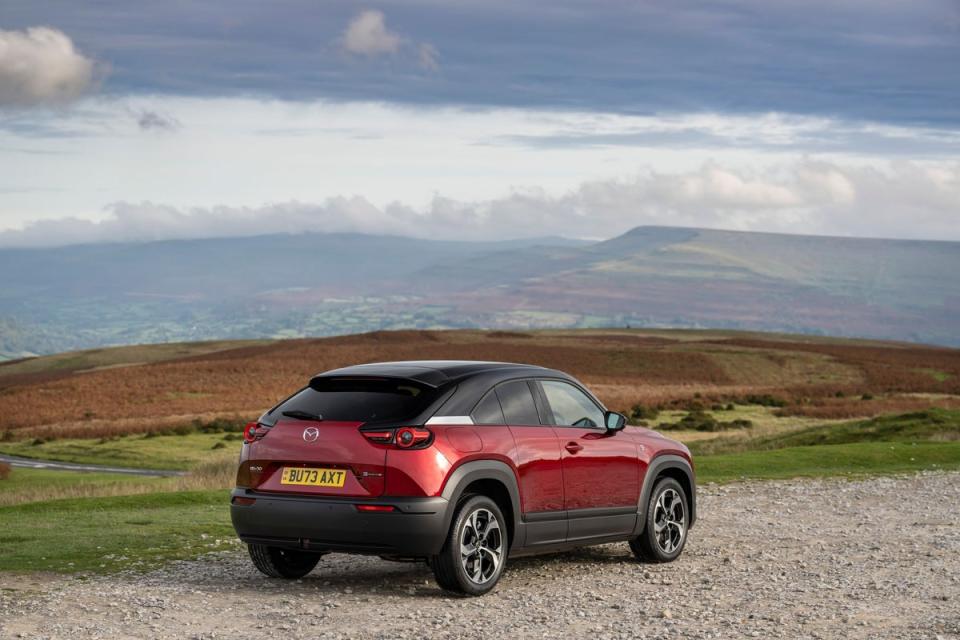
Many electric cars have eyeball-squashing acceleration, not so the Mazda, but it is still quick off the mark. The ride is quite pliant, the softer suspension does result in some lean when cornering hard, but the car handles with precision. It is unflustered when pushed into bends and possesses commendably accurate steering.
Practical proposition?
Mazda has sold around 4,000 pure electric MX-30s since the car debuted in Britain about three years ago. Perhaps the EV MX-30’s appeal has been blunted by a smaller battery than some rivals. Mazda claims this improves the MX-30’s lifetime environmental footprint, but it also reduces its overall range. Think under 124 miles between charges. The R-EV plug in hybrid version will go further, and unless it runs out of petrol will never have a flat battery (and can be plugged into a fast charger and replenished in under half an hour), but this brings us to fuel economy, which in the real world isn’t great.
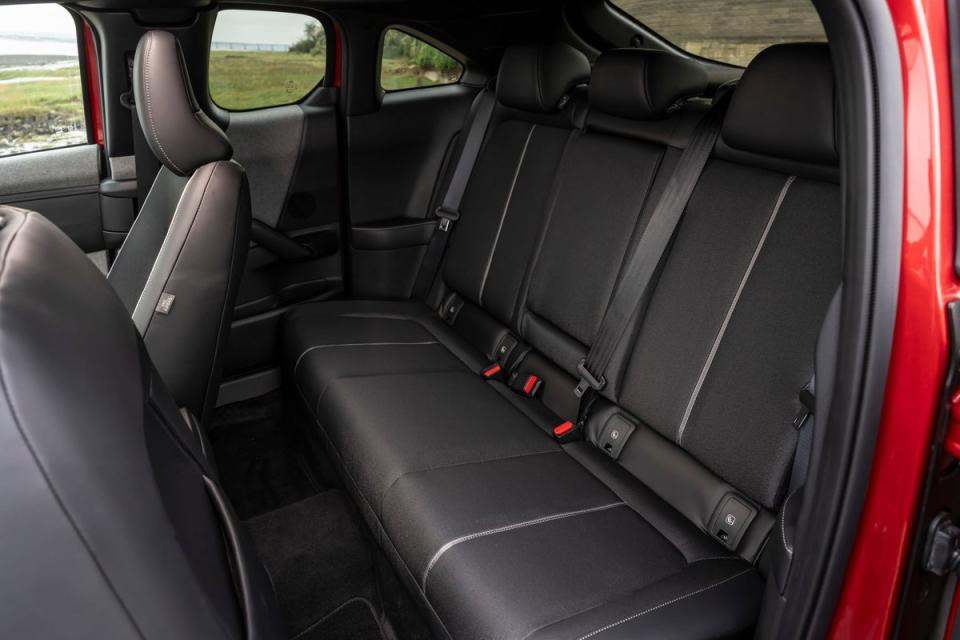
Mazda claims 37.2mpg combined, but the car we drove recorded a miserable 26mpg during a grim, rain-lashed test that required power-sapping wipers, lights, heating and ventilation to work hard. Doubtless operating economy would improve when more of these functions were switched off, but such thirst is a big demerit.
This is a pity, because although there are some design flaws, the MX-30 R-EV is a genuine and refreshing attempt at doing things differently, and on many levels it’s a likeable car.
The Facts
Mazda MX-30 R-EV 170ps Exclusive-Line
0-62mph: 9.1sec
Top speed: 87 mph
Electric range: 53 miles
MPG: 37.2 (combined)
CO2 emissions: 21g/km
Price: £33,495


